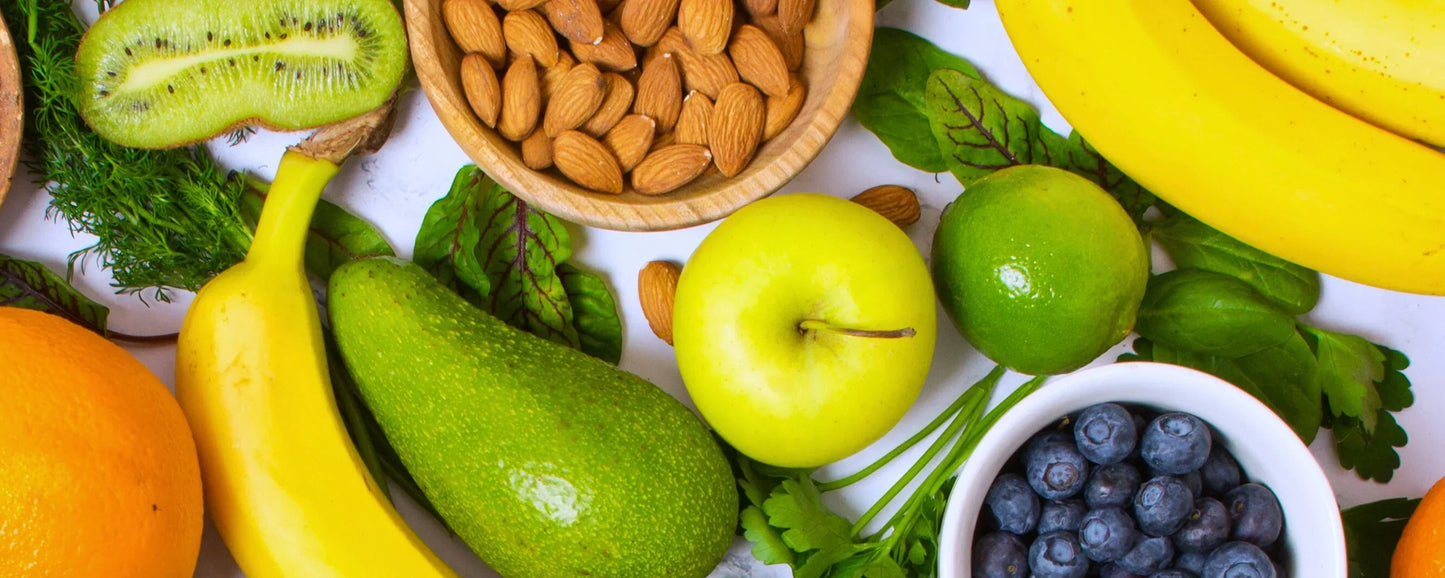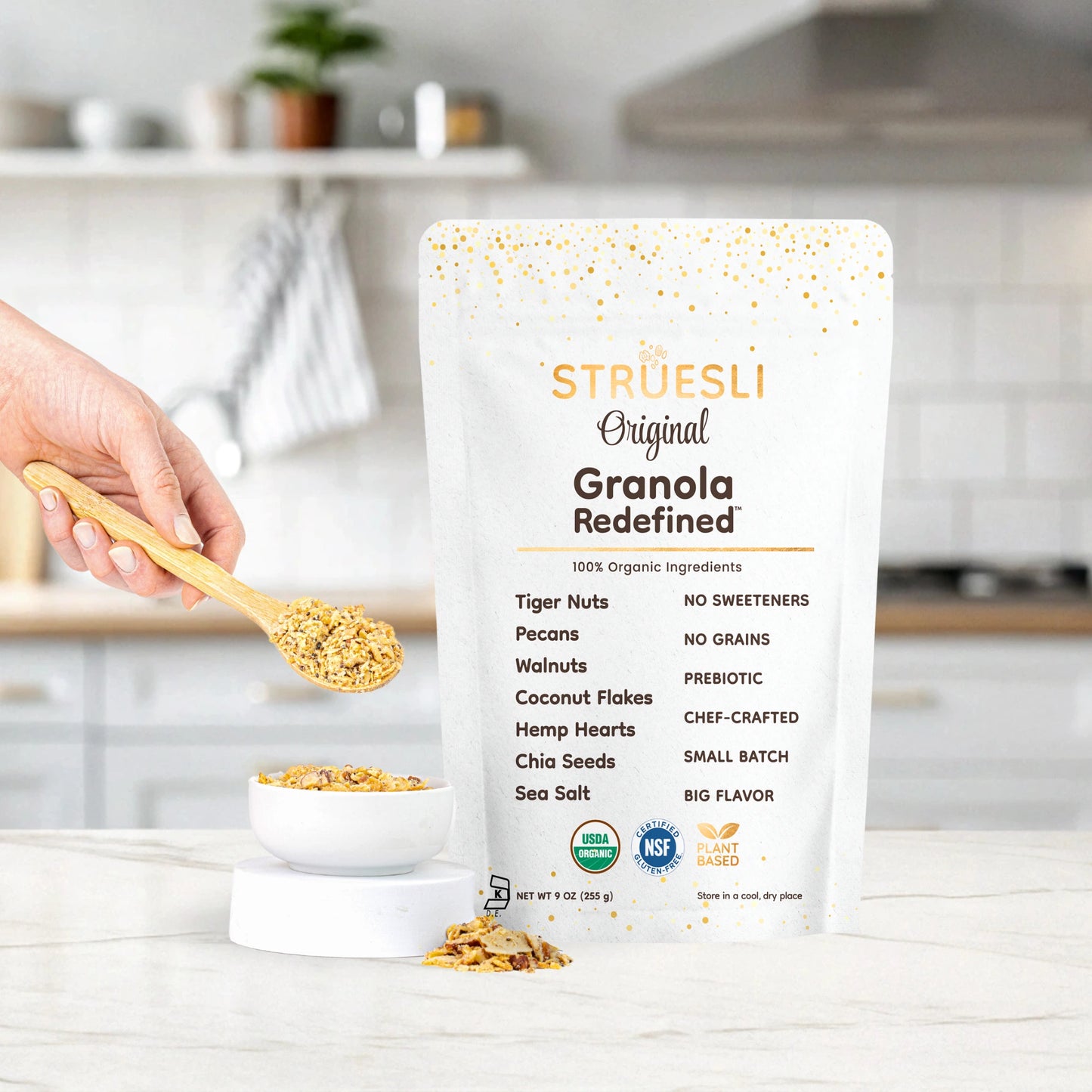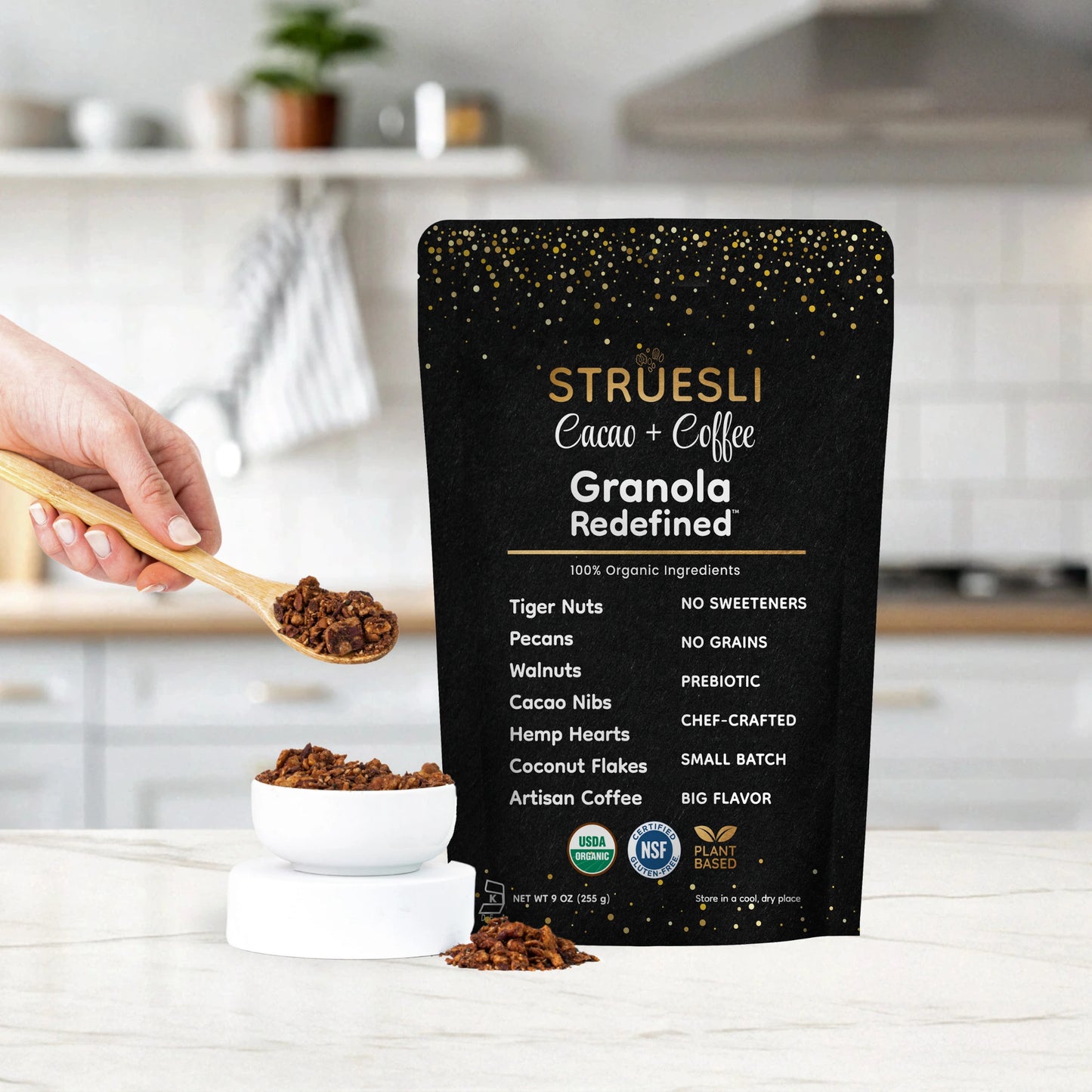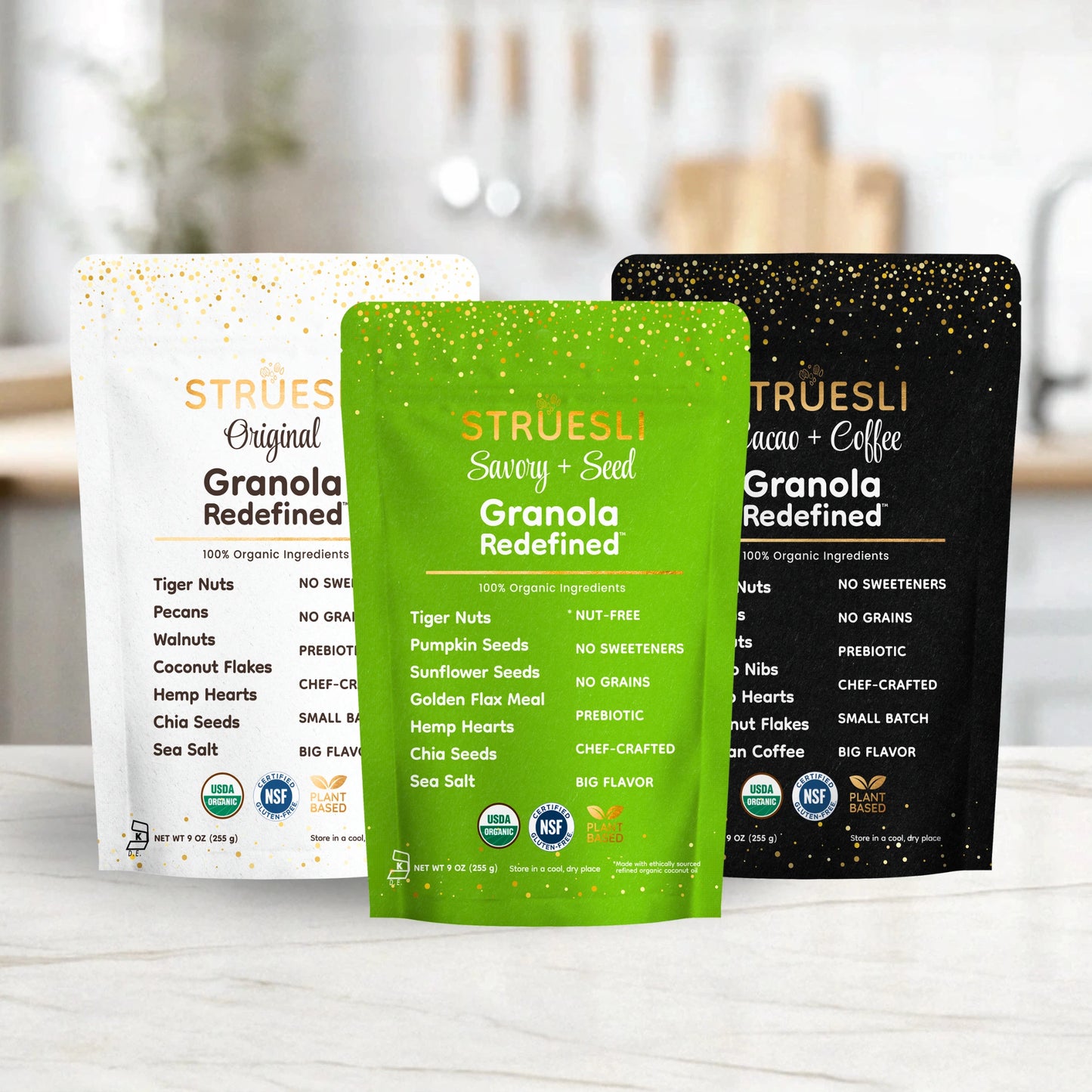
Does it sometimes feel like everyone is telling you to get more fiber? What exactly is fiber and why is it so important? We'll explore everything fiber can do for you, and the best (read: most delicious) ways to get more of it!
The Health Benefits Of Fiber
Fiber is a type of carbohydrate that you can’t digest. So, even though you don’t absorb any nutrients from fiber, it still does plenty of helpful things as it makes its way through your body.
There are a few ways to classify types of fiber, but perhaps the easiest way to understand is by splitting fiber into two groups: soluble and insoluble. They are both important and good for you.
A Look At Soluble Fiber
Think of soluble fibers as the food you are feeding to the good bacteria that live in your gut. Those bacteria use these sources of fiber by fermenting them (breaking them down for fuel). The more and varied types of soluble fiber they receive, the more your good gut bacteria can thrive and build up an army that:
- helps breakdown other foods, making digestion easier and the nutrients in foods more available for your body to absorb
- produces acids that stop the growth of harmful bacteria and build your immunity, keeping you healthy
- slows down and sometimes blocks the absorption of fats, sugars, and cholesterol from foods into your bloodstream, helping to lower blood sugar, blood lipids, and LDL cholesterol
Soluble fibers are found in high amounts in beans, oats, sweet potatoes, carrots, nuts and seeds, avocados, apples, nectarines and apricots, figs, broccoli, and Brussels sprouts.
More On Insoluble Fiber
Now, think of insoluble fibers as transporters. They do all those things you think about when you hear the word fiber (aka they improve your digestion by binding to other digested particles, making your stools softer and easier to pass). You can thank insoluble fiber for:
- helping to manage food cravings by giving you a satisfied feeling after a meal and sending signals to your brain that you’ve eaten enough
- making you “regular,” which helps prevent digestion troubles, such as constipation, bloating, and cramping
- lowering the risk of digestion-related diseases, such as diverticulitis and colorectal cancer, and some studies have linked diets high in insoluble fibers to lower risk of autoimmune-neurological conditions, such as multiple sclerosis
Insoluble fibers are found in high amounts in whole grains, root vegetables, cauliflower, leafy greens, and fruits and nuts with the skins still on.
Many healthy foods are fiber heroes, containing both soluble and insoluble fiber. Since it’s full of a variety of nutritious plant-based foods, Struesli contains 5 grams of fiber per 1/4 cup, which is both naturally occurring soluble and insoluble fiber.
How Much Fiber Do You Need Daily?
Most adults should aim to get 25-30 grams daily, according to the American Heart Association. Ideally, your fiber should come from a variety of foods. But most American adults get about half that much, averaging just about 15 grams per day.
Another way to meet the recommended fiber intake is to aim for 14 grams of fiber per every 1,000 calories a person eats daily, on average. For example, someone who eats about 2,000 calorie diet should aim for about 28 grams of fiber daily.
Our bodies can handle higher amounts of fiber, and that typically brings more benefits. But it is possible to get too much. More than 70 grams of fiber per day is not advised, particularly when consumed over a short period of time. This amount of fiber may cause side effects such as bloating, gas, and cramping as your body works to digest the fiber.
Adding more best fiber foods to your day can be delicious and enjoyable. Build meals around all types of vegetables, fruits like berries and apples, and legumes like chickpeas, black beans, and lentils.
6 Easy Ways To Get More Fiber
Back to that recommendation to Get More Fiber! The reason it’s so important to do so, and why you’re always hearing that advice from parents and nutritionists like me, is because nearly everyone living in America doesn’t get enough of the most fiber-rich foods: vegetable, beans, legumes, fruits, whole grains, seeds, and nuts. And because we don't eat enough of those foods, we’re not getting enough fiber.
A positive point is that fiber shows up in many delicious foods you may not be aware of. Here are some easy ways to get more fiber in each day:
- Put avocado on everything. Not only does creamy avocado make a delicious and pretty topping for soups, salads, and toast, it also gives you healthy monounsaturated fats and 5 grams of fiber in every half of an avocado.
- Plan a power bowl for dinner this week. Top rice (or cauli rice, lettuce, quinoa, or pasta) with roasted veggies, sauce, avocado, nuts or any leftovers or flavorful toppings (like Struesli) that you have around. Clear out the fridge and get some bonus fiber!
- Snack on fruit, especially fruit with the skins still on or with visible seeds, such as apples and pears, strawberries and raspberries, and apricots and nectarines (bananas and citrus are high in fiber, too).
- Mix some GORP (aka Good Ol’ Raisins and Peanuts) for a high-fiber, portable snack that packs a fiber punch.
- Make popcorn. Though popcorn may not come to mind when you think of whole grains, it is one. Just 4 large handfuls (that’s 3ish cups) of air-popped popcorn provides 4 grams of good-for-you fiber.
- Eat more Struesli! That’s right. Struesli Original packs an impressive 5 grams of fiber in just a 1/4 cup serving. There's no tastier way to give yogurt, salads, soups, and more, a crispy topping and a fiber boost all at once.
With all these options, getting plenty of important fiber each day can be both easy and delicious.
Why Struesli is Your Tasty, Fiber-Packed Option
Struesli Grain-Free Granola contains several ingredients that contribute fiber, including tiger nuts, flax seeds, chia seeds, hemp hearts, and walnuts. Thanks to all these whole-food ingredients, Struesli naturally contains more fiber than most granolas and cereals. Add it to boost the fiber of everything from yogurt and cottage cheese to oatmeal and baked goods.
Written by Jessie Shafer, RD
Updated April 22, 2025




